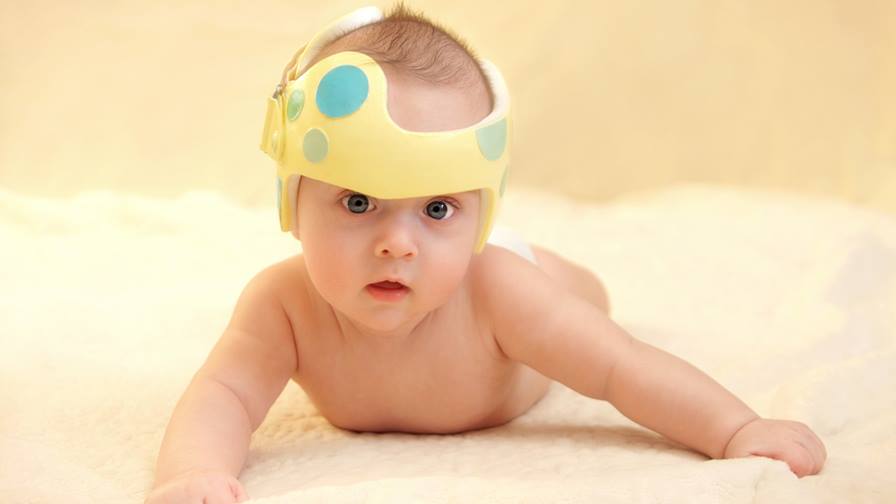

This means that as soon as the moulding ceases, the head can start growing back towards its normal, natural shape - when the baby is old enough not to lie in one position for a long time, and to change sleeping position lots of times each night, and any tendency to turn the head more easily in one direction than another has disappeared. What is the outlook for babies with positional plagiocephaly?įor children with positional plagiocephaly, the ‘natural’ shape of the head is entirely normal – it is the moulding that has pushed it out of shape.
#BABIES HEAD SHAPES WHEN TO WORRY FREE#
If they are to be effective, it would seem sensible to start using them when the head is still ‘plastic’ enough to have the natural correction process encouraged by restricting growth in the ‘bulgy’ parts of the head while encouraging growth in the flatter areas by leaving them free – preferably before six months. They often have to be worn for several months and for 23 hours out of 24. If all the actions listed above are taken, does a helmet add anything? The answer is that we do not know for sure. Helmets and bands: the use of these remains controversial.The sooner the head turns as easily one way as the other, the sooner natural correction of head shape can begin. Physiotherapy: for those children with difficulty turning the head in one direction, physiotherapy can be very helpful.

Check how they are lying in the car seat or buggy too. A rolled up towel under the mattress can help the child sleep with less pressure on the flattest part of the head. Sleeping pattern: adjust a baby’s sleeping pattern so that everything exciting is in the direction that encourages them to turn their head the wrong way – for example, alter the position of any toys or mobiles.Babies like to learn to lift their heads and look around them. ‘Tummy time’: we are not suggesting that a baby should sleep on their tummy while still young, but the more time babies spend on their tummies, the better the chance of stopping the plagiocephaly getting worse and allowing natural correction to begin, so play with them on their tummy.Early recognition of the plagiocephaly: the younger the child is when it is recognised, the better the chances of improving it.

There are several ways of encouraging natural improvement in the shape of the head: In mild cases, babies will not need any active treatment. What are the signs and symptoms of plagiocephaly? In severe cases, moulding of one side of the back of the head can produce unevenness at the front, although this is usually mild. If these babies develop positional plagiocephaly it will affect the side of the back of the head that they always lie on. Some babies have a tendency to turn their heads in one direction more easily than the other for the first few months of life. If a baby lies flat on their back, any positional moulding is likely to be evenly spread across the back of the head. However, doctors still recommend that babies sleep on their backs as the benefit of reducing SIDS far outweighs any dangers due to positional plagiocephaly. The mattresses they lie on are also firmer than before and it is the combination of these factors that has led to an increase in the number of babies with positional plagiocephaly. A result of this is that babies now spend much of their early lives lying on their backs, while sleeping, while being carried about or while in car seats, for instance, and this is a time when the baby’s skull is softest and most easily moulded into a different shape. Since the ‘back to sleep’ campaign, doctors have recommended that all babies sleep on their backs to reduce the risk of sudden infant death syndrome (SIDS or ‘cot death’). The main cause of pressure is the baby’s sleeping position. Staying safe at GOSH and outside the hospitalĬoming to GOSH for a day or inpatient admissionĬoming to GOSH for an outpatient appointmentĪlthough you may hear plagiocephaly referred to as a type of craniosynostosis (a condition where the skull plates fuse too early), the skull plates are not fused, but moulded into a different shape - a condition that does not require the surgical treatment needed for craniosynostosis. Our new visiting guideline after COVID-19


 0 kommentar(er)
0 kommentar(er)
